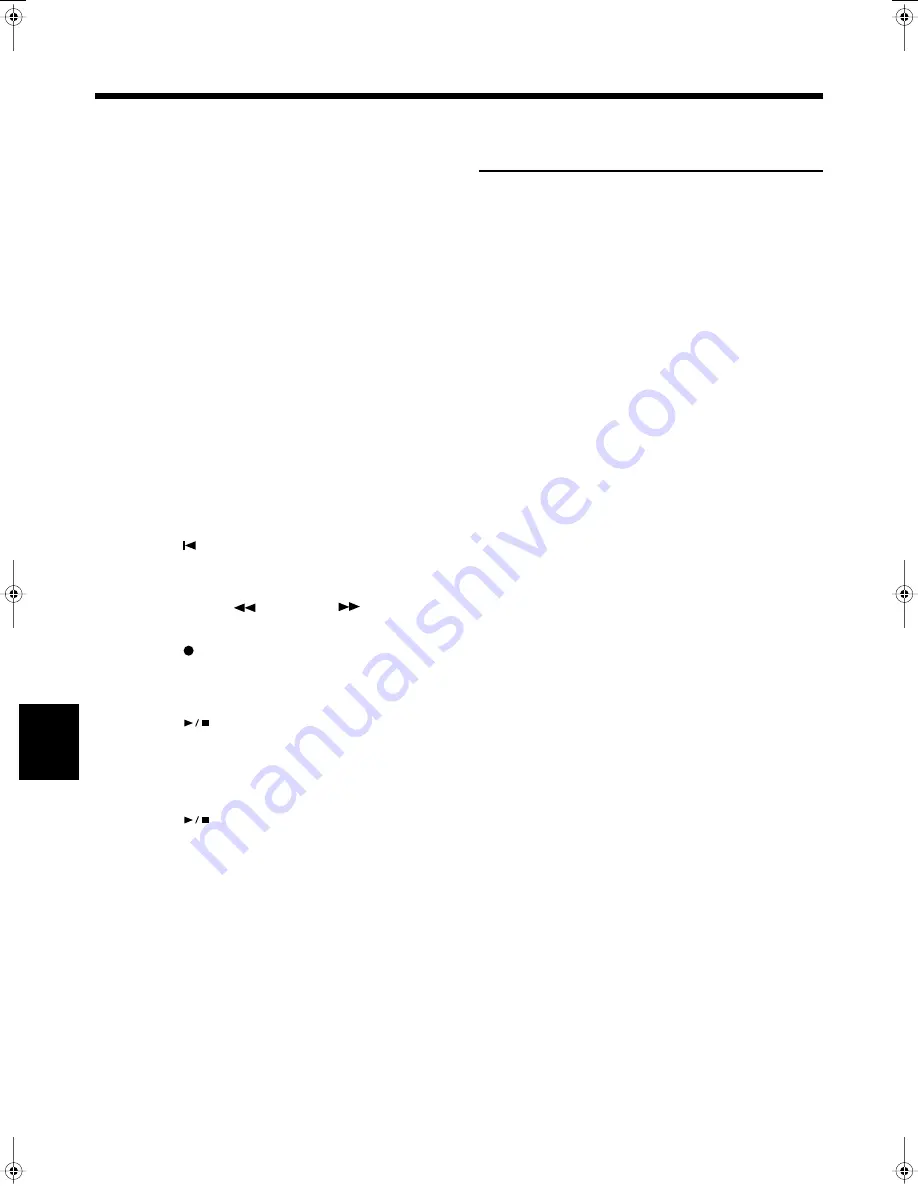
130
Chapter 7 Creating and Editing Songs
Chapter 7
❍
Step 2 Start Recording
If necessary, choose a recording method.
For more on how to record, refer to p. 130.
If you record for the first time, there’s no need to select the
recording method.
Selecting the Part to Record
1.
Display the 16-track Sequencer screen (p. 127).
2.
Touch the number for the Part you want to record.
The button for the touched part being set turns orange.
You can only record drum sounds or effect sounds on
Part D (10) or Part S (11). You can select drum sets or
effect sounds by selecting Part D (10) or Part S (11) and
touching <Drum Set>.
Selecting the sound to play
3.
Use the Tone buttons to choose a Tone to play.
After selecting a Tone, touch <Exit> to call up the “16-
Track Sequencer screen.”
Recording the performance
4.
Press the [
(Reset)] button.
Recording will start at the beginning of the song.
If you want to record from a point other than the
beginning, use the [
(Bwd)] and [
(Fwd)]
buttons to select another measure to begin.
5.
Press the [
(Rec)] button and watch the indicator is
light up.
The KR is put in recording standby.
6.
Press the [
(Play/Stop)] button.
A two-bar count-in sounds, then recording starts.
* You cannot use the performance pads when recording with the
16-track sequencer.
7.
Press the [
(Play/Stop)] button.
Recording stops.
When one part is recorded, continue by selecting and
recording another part. Continue layering parts to finish
recording the song.
→
You only need to follow the procedure described in “Step 1 –
Prepare for Recording” when you’re recording the first Part.
For the second Part and after, you can skip step 1 and proceed
from “Step 2 Start Recording.”
* Any performance that has been recorded is deleted when the
power to the KR is turned off. It is a good idea to save song
data to a floppy disk or user memory. For more information,
refer to “Saving Songs” (p. 116).
Changing the Recording
Method (Rec Mode)
You can use any of the four methods below to record with
the KR.
Although you will normally be using “Replace Recording,”
where previously recorded material is erased when new
sounds are recorded, you’ll find that you can record songs
easily by using this method in combination with other
recording methods.
Replace Recording (p. 131)
This is the normal method for recording. New material is
recorded as previously recorded material is erased.
Mix Recording (p. 131)
New notes are recorded on top of notes previously recorded.
This convenient feature makes it easy for you to record
melodies over prerecorded accompaniment.
Loop Recording (p. 132)
Specified measures are recorded repeatedly, while new notes
are combined with existing music. A convenient feature for
creating rhythm parts. Loop Recording allows you to record
over and over within a selected segment, adding a different
percussion sound with each pass.
Punch-in Recording (p. 133)
You can re-record only a specified passage as you listen to a
recorded performance.
→
Immediately after the power is turned on, Replace Recording is
selected.
KR-17_15_e.book 130 ページ 2004年12月6日 月曜日 午後1時54分
















































